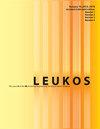Photoreceptor Enhanced Light Therapy (PELT): A Framework for Implementing BiologicallyDirected Integrative Lighting
IF 2.6
2区 工程技术
Q2 CONSTRUCTION & BUILDING TECHNOLOGY
引用次数: 4
Abstract
ABSTRACT We introduce a lighting technology designed to produce photoreceptor-directed lights (PrD). This photoreceptor-enhanced light therapy (PELT) differs from conventional supplemental lighting by using multiple limited-bandwidth primaries to generate spectra that appear white, and that are tailored to produce circadian equivalent (CE) lights for selectively increasing or decreasing the relative activation levels of specific photoreceptor classes in the human eye. Rather than designing a device to match a spectrum’s shape, we optimize the available hardware, so it best matches the biological effects of that spectrum. It goes beyond three and four dimensions (three cones plus melanopsin) to consider the biological responses mediated via all five photoreceptor classes (including rhodopsin); the inclusion of a fifth photoreceptor class is non-trivial both in implementation and biological effect. Here, we describe the technical specifications of the PELT device and its calibration procedures. Photoreceptor-directed lights with variable melanopsin and rhodopsin excitations and equal photometric luminance are presented. Device application examples are provided that include personalized supplemental light spectra for patients with photoreceptor sensitivity loss, for healthy people exposed to extreme seasonal or work-related variation in their ambient lighting patterns, and as a stimulus generator to evaluate the effects of light on human health and behavior mediated via the melanopsin expressing intrinsically photosensitive retinal ganglion cells (ipRGCs). In integrative lighting practice, the PELT method extends to dynamic control of the biological potency of the melanopsin and rhodopsin excitations over a large range, independent of perceived changes in correlated color temperature (CCT).光感受器增强光疗法(PELT):实现生物定向综合照明的框架
摘要:我们介绍了一种用于产生光感受器定向光(PrD)的照明技术。这种光感受器增强光疗法(PELT)与传统的补充照明不同,它使用多个有限带宽的原色来产生白色的光谱,并定制为产生昼夜节律等效(CE)光,以选择性地增加或减少人眼中特定光感受器类别的相对激活水平。我们不是设计一个设备来匹配频谱的形状,而是优化现有的硬件,使其最符合该频谱的生物效应。它超越了三维和四维(三视锥细胞加黑视素)来考虑通过所有五种光感受器类(包括视紫红质)介导的生物反应;包括第五类光感受器在实施和生物效应方面都是非微不足道的。在这里,我们描述PELT设备的技术规格及其校准程序。提出了具有可变黑视质和视紫红质激发和等光度的光感受器定向光。该设备的应用实例包括:针对光感受器敏感性丧失的患者、暴露于极端季节性或与工作相关的环境光照模式变化的健康人群的个性化补充光谱,以及作为一种刺激发生器,通过表达内在光敏视网膜神经节细胞(ipRGCs)的黑视素介导,评估光对人类健康和行为的影响。在综合照明实践中,PELT方法扩展到在大范围内动态控制黑视质和视紫红质兴奋的生物效力,独立于相关色温(CCT)的感知变化。
本文章由计算机程序翻译,如有差异,请以英文原文为准。
求助全文
约1分钟内获得全文
求助全文
来源期刊

Leukos
工程技术-光学
CiteScore
7.60
自引率
5.60%
发文量
19
审稿时长
>12 weeks
期刊介绍:
The Illuminating Engineering Society of North America and our publisher Taylor & Francis make every effort to ensure the accuracy of all the information (the "Content") contained in our publications. However, The Illuminating Engineering Society of North America and our publisher Taylor & Francis, our agents, and our licensors make no representations or warranties whatsoever as to the accuracy, completeness, or suitability for any purpose of the Content. Any opinions and views expressed in this publication are the opinions and views of the authors, and are not the views of or endorsed by The Illuminating Engineering Society of North America and our publisher Taylor & Francis. The accuracy of the Content should not be relied upon and should be independently verified with primary sources of information. The Illuminating Engineering Society of North America and our publisher Taylor & Francis shall not be liable for any losses, actions, claims, proceedings, demands, costs, expenses, damages, and other liabilities whatsoever or howsoever caused arising directly or indirectly in connection with, in relation to, or arising out of the use of the Content. Terms & Conditions of access and use can be found at http://www.tandfonline.com/page/terms-and-conditions .
 求助内容:
求助内容: 应助结果提醒方式:
应助结果提醒方式:


